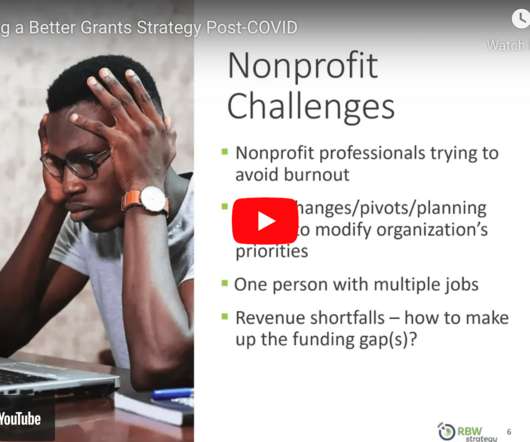How to Align Assets with Mission: Small Steps That Nonprofits Can Take
NonProfit Quarterly
JANUARY 25, 2023
Many in the nonprofit sector look at their income statements (also known as the “profit and loss” report), but unless you’re a chief financial officer or perform a similar role, you may spend far less time looking at your organization’s overall financial position.





















Let's personalize your content